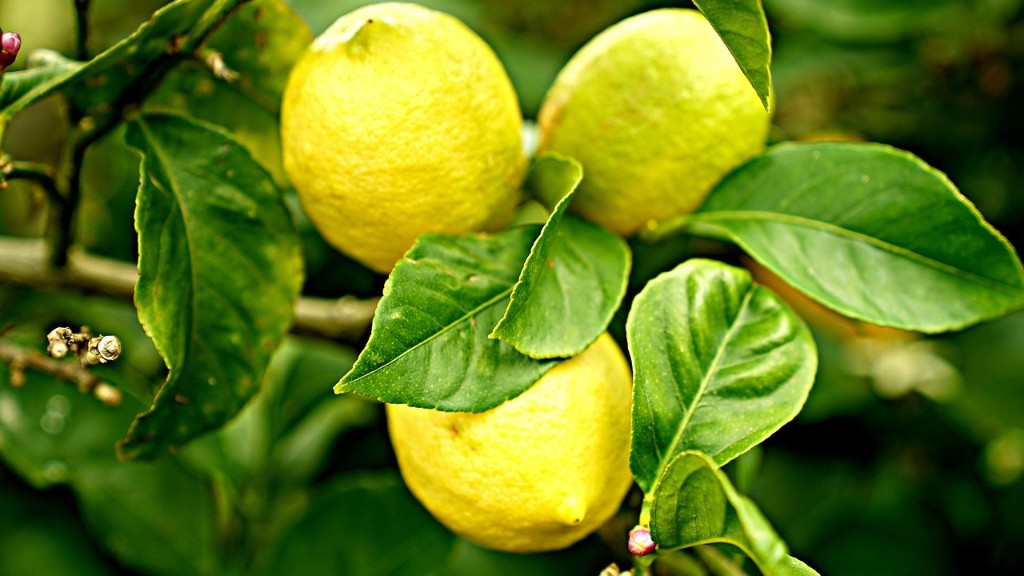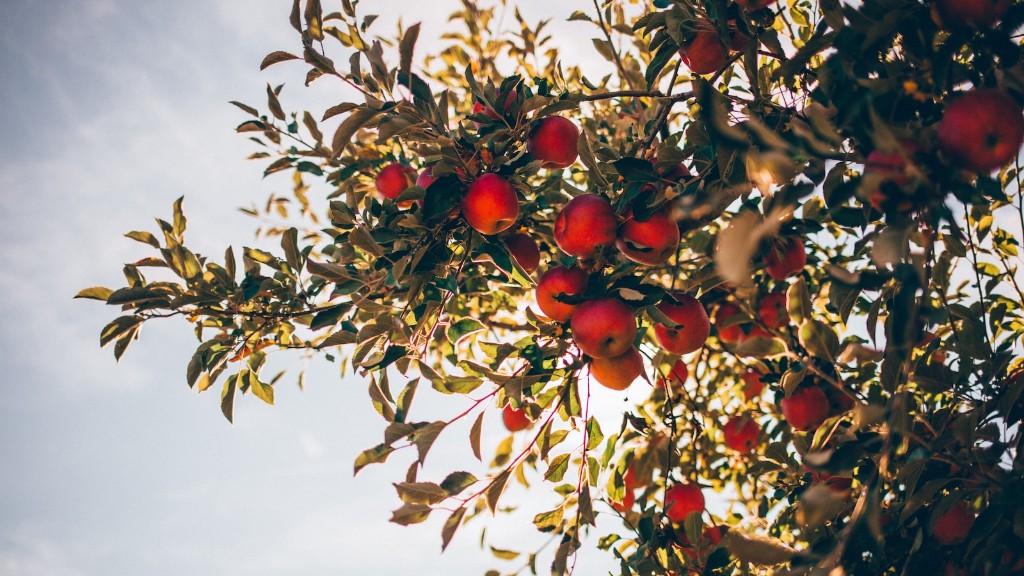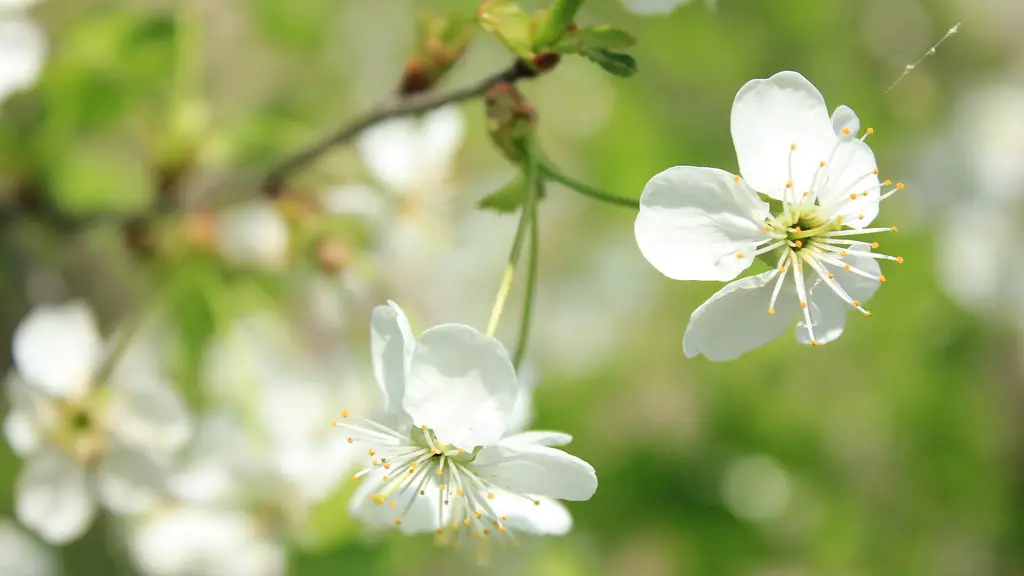If you’ve ever gone shopping for a lemon tree, you know it can be daunting to pick the right one. The variety of lemon trees available can be confusing, leaving many people wondering which one to plant. Fortunately, with some basic information, you can make an informed decision and choose the perfect lemon tree for your home.
First, it’s important to consider the type of climate you live in. Most lemon trees do best in warm climates and require at least 8-10 hours of sunlight each day. If you live in a colder climate, go with a hardier variety such as Lisbon or Eureka. If your climate is very hot, opt for the Meyer or Lemoquat varieties.
The second factor to consider is soil type. Which type of soil will your lemon tree be planted in? For example, sandy loam is ideal for most varieties of lemon, while clay soils are best suited for the Meyer or Lemoquat varieties. Additionally, you’ll need to make sure the soil has proper drainage and has adequate nutrients to support the tree.
Third, you should think about size and space. Meyer lemon trees are a great choice if you have limited space, as they can reach heights of 10-15 feet. On the other hand, Lisbon, Eureka, and Lemoquat varieties can reach heights of 30-50 feet, so you’ll need to make sure you have plenty of space for them to grow.
When it comes to upkeep, some lemon trees require more maintenance than others. The Meyer variety is a low-maintenance tree, while the Lisbon, Eureka, and Lemoquat varieties are more demanding and require regular pruning and fertilizing.
Finally, when selecting a lemon tree, you should look for signs of good health. Avoid trees with signs of disease such as yellowing or spotted leaves. You should also pick a lemon tree that is in the right potting soil so the roots can get plenty of oxygen and nutrients.
Watering Requirements
Once your lemon tree is planted, you will need to pay close attention to its watering requirements. All lemon trees need plenty of water, but the amount required will depend on the type and age of the tree. Meyer lemon trees require less water than the Lisbon, Eureka, and Lemoquat varieties. Additionally, mature trees need less water than younger ones.
Your watering schedule should also depend on the weather. In warmer climates, your lemon tree will need more frequent watering than in cooler areas. It’s best to water your lemon tree at the base of the tree, ensuring the soil is moist but not soggy.
When deciding when to water your lemon tree, think about how much rain your area receives and the temperature of the soil. The soil should be moist but not too wet, so it’s a good idea to stick your finger in the soil to gauge the moisture level before watering.
Finally, keep an eye out for signs that the tree is not getting enough water, such as wilting or yellowing leaves. If the tree is not getting enough water, it’s important to adjust your watering schedule to ensure the tree stays healthy.
Pruning
Pruning is an essential part of growing a healthy lemon tree. Pruning helps to keep the tree healthy, encourage new growth, and even increase the number of fruits it produces. Different types of lemon trees have different pruning needs, so it’s important to research and follow the instructions for your specific type.
In general, you should avoid heavy pruning, as this can stunt the growth and development of the tree. Instead, focus on removing dead or diseased branches, as well as any branches that are growing in an awkward direction. You should also remove any water shoots, as these can take away from the growth of the main branches.
When pruning, make sure you use sharp, clean tools and make the cuts cleanly and at the right angle. Additionally, always prune above a healthy bud and never remove more than 25% of the tree in one season.
Fertilizing
If you want to ensure your lemon tree is getting the nutrients it needs to thrive, you should fertilize regularly. Lemon trees need nitrogen and potassium to thrive, so make sure these two nutrients are included in your fertilizer. Additionally, you should choose a fertilizer that is formulated for citrus trees.
When it comes to fertilizer timing, most experts recommend fertilizing your lemon tree every few months during the growing season. You should also take a soil test before you start fertilizing, as this can help you determine which nutrients your tree may be lacking.
When applying fertilizer, make sure you spread it evenly under the tree’s canopy. You should also water the tree after applying fertilizer to help the nutrients get absorbed by the tree’s roots. Finally, don’t forget to follow the instructions on the fertilizer package to ensure you don’t over-fertilize your tree.
Pest and Disease Control
Unfortunately, lemon trees are prone to pests and diseases. The most common pests are aphids and mealybugs, while the most common diseases are bacteria and fungi. The best way to keep pests and diseases at bay is to maintain good tree health and inspect your tree regularly for signs of disease or pests.
If you do notice signs of pests or disease on your lemon tree, the best option is to use an organic pesticide or fungicide. Make sure to follow the instructions on the product’s label and never use more product than recommended. You should also make sure to apply the product in the early morning or evening, when temperatures are lower and the risk of burning the tree is reduced.
Finally, if your lemon tree is still infested with pests or disease, you may need to consult an expert or take the tree to a professional. No matter what, don’t give up! With a little effort, you can have a healthy lemon tree.
Harvesting
When it comes to harvesting, the most important thing is to wait until the lemons are fully ripe. Lemons generally take about 6-8 months to ripen, so patience is key. The lemons should be bright yellow in color and should be firmly attached to the branch.
When harvesting, make sure you use a sharp, clean pair of scissors and to avoid damaging the tree. Additionally, make sure to wear protective gloves, as lemon juice can be highly acidic and can irritate the skin. Finally, make sure to store the lemons in a cool, dry place, as heat and humidity can cause them to spoil quickly.
Conclusion
Choosing the right lemon tree for your home can feel overwhelming, but with some basic information, you can make an informed decision. Consider the type of climate you have, the soil type, the size and space, the upkeep requirements, and the signs of good health when selecting a lemon tree. Additionally, pay close attention to the tree’s watering requirements, pruning needs, fertilizing routine and pest and disease control to keep it healthy. Finally, make sure to wait until the lemons are fully ripe before harvesting them and store them in a cool, dry place. Following these steps can help ensure your lemon tree is healthy and productive for many years to come.






Friends are life. Every one has that one best friend who is so special for us.Talking about the age old problem of my friends and your friends. There is no relationship where the guy and the girl like every friend of each other.